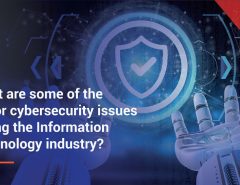Organizations need to spend a lot of time thinking about the network security measures as even a single security breach can inflict a lot of damage on the enterprises. It is important to revisit the existing security strategies or approaches and newer policies need to be devised to combat the advanced threats like ransomware, DDoS, double whammy attacks and others. Before moving forth with the essential security policies, it is important to perform a security assessment which in turn gives a complete picture of the existing risks and prospective security incidents.
How Policies can Help Organizations Avoid Cyber Threats?
Unified Security Operations Program is the most effective tool for combating the proliferation of cyber threats. The mentioned program aims at detecting, preventing, analyzing and even responding to an organization’s effort towards combating the advanced cyber threats. Moreover, this program also helps formulate the security policy for an enterprise which turns out to be beneficial against the existing vulnerabilities and data breaches. Essential policies, therefore, safeguard the confidential data; something which is extremely valuable to the cybercriminals.
Read more: 5 Reasons why startups need to boost their cyber-resilience
Having a well-researched policy improves the cybersecurity of an organization. Moreover, the policies also prepare enterprises for the compliance and auditing requirements. Apart from that, essential security policies improve the operational efficiency of an organization followed by increased stakeholder accountability.
It is important to understand that a security policy seamlessly establishes a link between processes, people and the existing technologies. It outlines the predefined user behavior followed by the usual deployment of security controls. Basically, a security policy keeps cyber threats at bay by formulating secured processes and asking employees to abide by the same. Therefore, these policies can keep end-user security breaches at bay.
EPS Solution- At the Core of Security Policies
The best part about having a security policy in place is that corporate networks are readily protected from data breaches resulting out of remote access. Endpoint Security solutions often form the crux of these essential policies and readily secure organizations from entry-point specific cyber threats. The usual features offered by a reliable EPS vendor include application whitelisting, data breach prevention, data encryption, system firewall and a host of anti-spyware and anti-malware additions. EPS solutions protect the networks from advanced cyber threats by being an inseparable part of a corporate security policy.
Amalgamating EPS Solutions and Corporate Security Policies
Security services providers like Seqrite offer functional endpoint security solutions which validate the existence of corporate security policies.
1. Advanced Device Control: Device policies are best validated by this essential EPS feature. Advanced device control safeguards organizational networks against unsolicited access from unverified devices.
2. Web Filtering: Based on the employee web access policies, this EPS feature blocks or permits website accessibility.
3. Asset Management: Certain enterprise policies solely focus on software and hardware monitoring. Asset management, therefore, assists in the process by notifying administrators about the company systems and associated alterations.
4. Patch Management: When it comes to assessing the policies regarding software upgrades and patching, this EPS feature assists organizations with the patch management process; thereby fixing vulnerabilities associated with operating systems and applications.
5. Application Control: This EPS feature categorizes applications depending upon the threats they pose and blocks or executes them, accordingly.
While these are some of the existing EPS features offered by Seqrite, there are a host of other attributes that are in sync with the corporate security policies. Be it file activity monitoring or DLP that keeps confidentiality in consideration or the group policy management that can help IT administrators draft flexible policies based on the situation, Seqrite comes forth with a cohesive EPS module for helping organizations stay away from advanced cyber threats.
As an IT security partner for your business, Seqrite provides comprehensive endpoint security from advanced cyber threats. To know more, visit our website or




